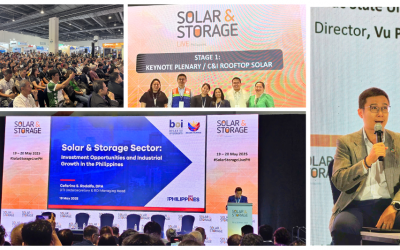
Sustainable development, according to Agenda 21, is defined as development that meets the needs of the current generation without jeopardizing future generations’ ability to meet their own needs. It is a well-balanced development in terms of socioeconomic and environmental factors…
Economically sustainable development
Economically sustainable development is defined as rapid, safe, and high-quality growth in all aspects of the economy that generates shared prosperity for all while maintaining an acceptable ecological limit without jeopardizing basic human rights.
A sustainable development economy must meet the following requirements:
- GDP growth and GDP per capita have both achieved high levels (currently, GDP growth in developing nations requires about 5% per year).
- Industry and services must have a bigger proportion of GDP than agriculture
- Economic growth is cost-effective, not growth without taking into account the costs.
Vietnam’s Sustainable Development Goals
Vietnam’s goal under the Socio-Economic Development Strategy for the period 2021-2030 is a developing nation with modern industry and a high middle income by 2030, and a developed country with a high income by 2045. In terms of the economy, Vietnam’s targets for sustainable development by 2030 are as follows:
- An average annual GDP growth rate of roughly 7%; GDP per capita will reach about 7,500 USD by 2030 at present prices.
- The processing and manufacturing proportion accounts for around 30% of GDP, whereas the digital economy accounts for roughly 30% of GDP.
- The urbanization rate is over 50%
- Total social investment averaged 33-35 percent of GDP, with public debt not exceeding 60% of GDP.
- The contribution of total factor productivity (TFP) to growth has reached 50%
- The average annual increase in social labor productivity is more than 6.5 percent
- Reduce annual energy consumption by 1-1.5 percent per GDP unit.
 One of the criteria for assessing economically sustainable development is GDP growth (Internet Photo)
One of the criteria for assessing economically sustainable development is GDP growth (Internet Photo)
Socially sustainable development
Socially sustainable development is defined as development that ensures social fairness, equality between social classes, and gender equality… There are seven requirements that must be met in order for socially sustainable development, included:
- Population stability and develop rural regions to reduce migratory pressure into cities.
- Minimize the negative impacts of the environment on urbanization
- Improve education, eradicate illiteracy
- Protect cultural diversity
- Gender equality, consideration to gender needs and interests
- Involve the public more in decision-making processes.
- According to the Socio-Economic Development Strategy for the period 2021-2030, socially sustainable development’s targets:
- Human Development Index – HDI remains above 0.7
- The average life expectancy is 75 years, with a healthy lifetime of 68 years.
- There are 35-40% of trained workers with degrees and certifications.
- The proportion of agricultural laborers in total social labor decreases to less than 20%.
Environmentally sustainable development
Environmentally sustainable development is defined as ensuring the quality of the human living environment when using natural elements from the environment. The following are some of the requirements for environmentally sustainable development:
- Efficient resource usage, particularly of non-renewable resources
- Development does not surpass the ecosystem’s load-bearing capacity.
- Protect biodiversity and the atmosphere of the Earth
- Control and reduce greenhouse gas emissions
- Closely protect sensitive ecosystems
- Reducing waste discharge, combating pollution (soil, water, air, food), improving and recovering contaminated regions’ environments…
 Clean energy is used to minimize greenhouse gas emissions, toward environmentally sustainable development
Clean energy is used to minimize greenhouse gas emissions, toward environmentally sustainable development
According to the Socio-Economic Development Strategy for the period 2021-2030, environmentally sustainable development’s five targets:
- Forest coverage rate is stable at 42 percent
- The rate of wastewater treatment and reuse in the river basin environment has above 70%.
- A decrease of 9% in greenhouse gas emissions (Compared to the development-as-usual scenario)
- Environmental standards are met in 100 percent of manufacturing and business establishments.
- Increase the area of marine and coastal conservation zones to 3-5 percent of the national sea region’s natural area.
Furthermore, the National Green Growth Strategy for 2021-2030, with a vision to 2050, Viet Nam sets a target that by 2030, the intensity of greenhouse gas emissions per GDP will be at least 15% lower than in 2014, and by 2050, it will be at least 30% lower (compared to 2014).
Toward achieve environmentally sustainable development, Prime Minister Chinh, Pham Minh made a series of important commitments during the COP26 Conference to join together with other nations to fight climate change and protect the Earth: Vietnam will reduce methane emissions by 30% by 2030, make commitments on forest protection and rational land use, and join the global climate change adaptation alliance, as well as convert coal power to clean energy… Prime Minister Chinh, Pham Minh, in particular, emphasized “Vietnam would develop and implement stronger measures to reduce greenhouse gas emission by using its resources, and the cooperation and support of the international community, along with nations with high emitting economies, in terms of both finance and technology transfer, particularly the implementation of mechanisms under the Paris Agreement, to reach “zero” net emissions by 2050”.
Sustainable development is a trend that many countries are pursuing. Since the United Nations member states agreed to adopt the 2030 Agenda with 17 Sustainable Development Goals (SDGs) in 2015, progress toward prosperous and harmonious development about the economy, society, and environment in each country have specific and unified destinations. And, after nearly six years of pursuing the Sustainable Development Goals, Vietnam has made several notable achievements and is presently rated 51 out of 165 nations in the United Nations’ Sustainable Development rank.
(Sources: Socio-Economic Development Strategy 2021- 2030; Sustainable Development in Vietnam: Evaluation Criteria and Development Directions to 2030 – Banking Magazine)
More infomation:
- What are the 17 Sustainable Development Goals?
- Vu Phong Energy Group towards sustainable development goals
- Renewable energy – The answer for environmental protection
- COP26: Joint voice to protect the future of the Earth
Vu Phong Energy Group









